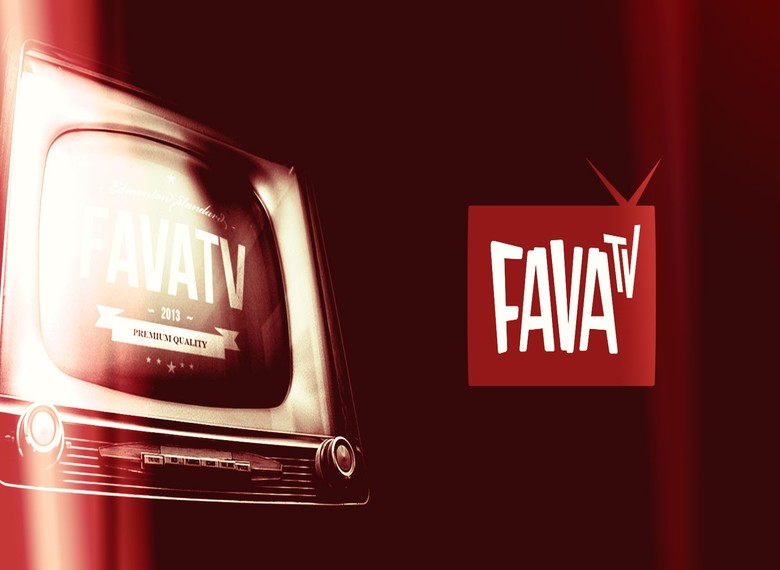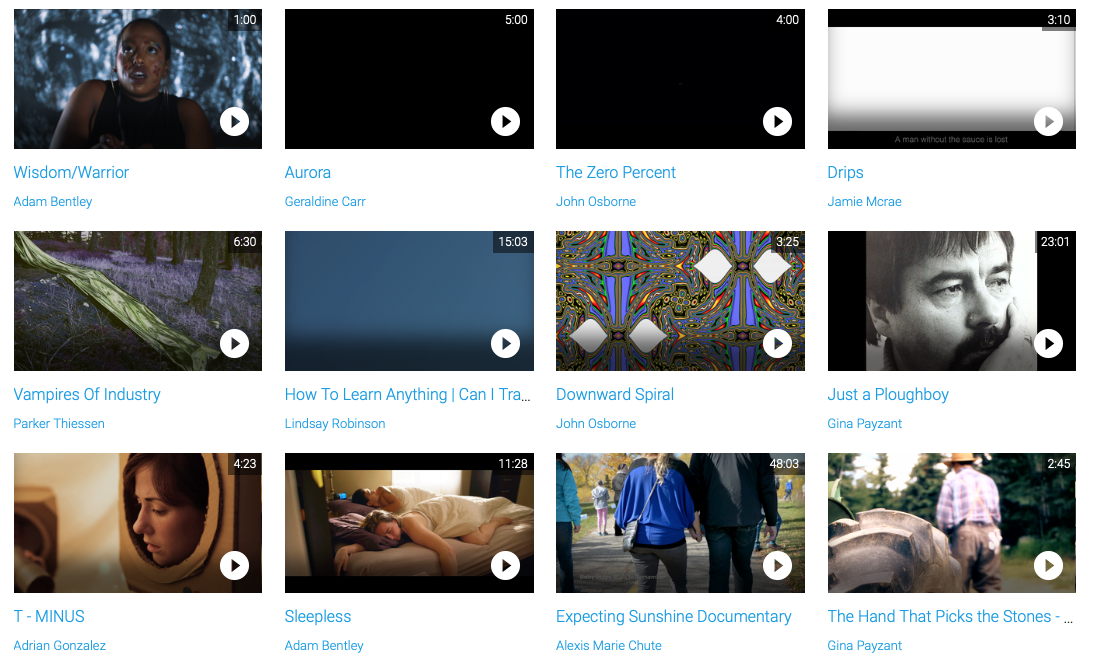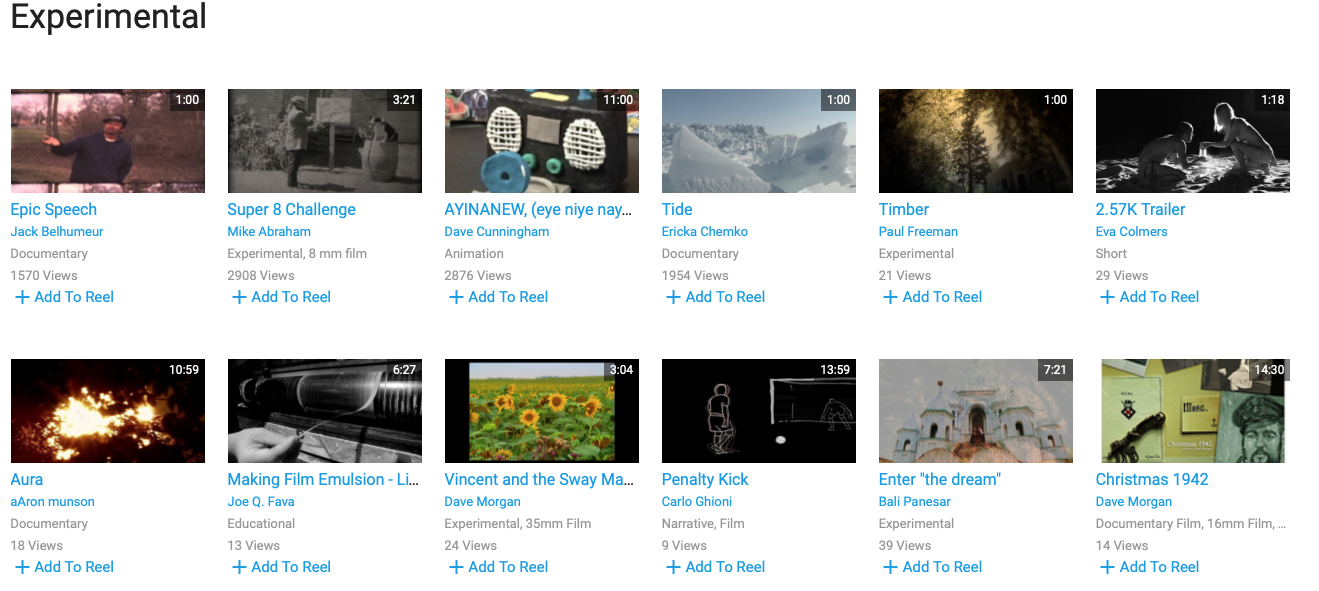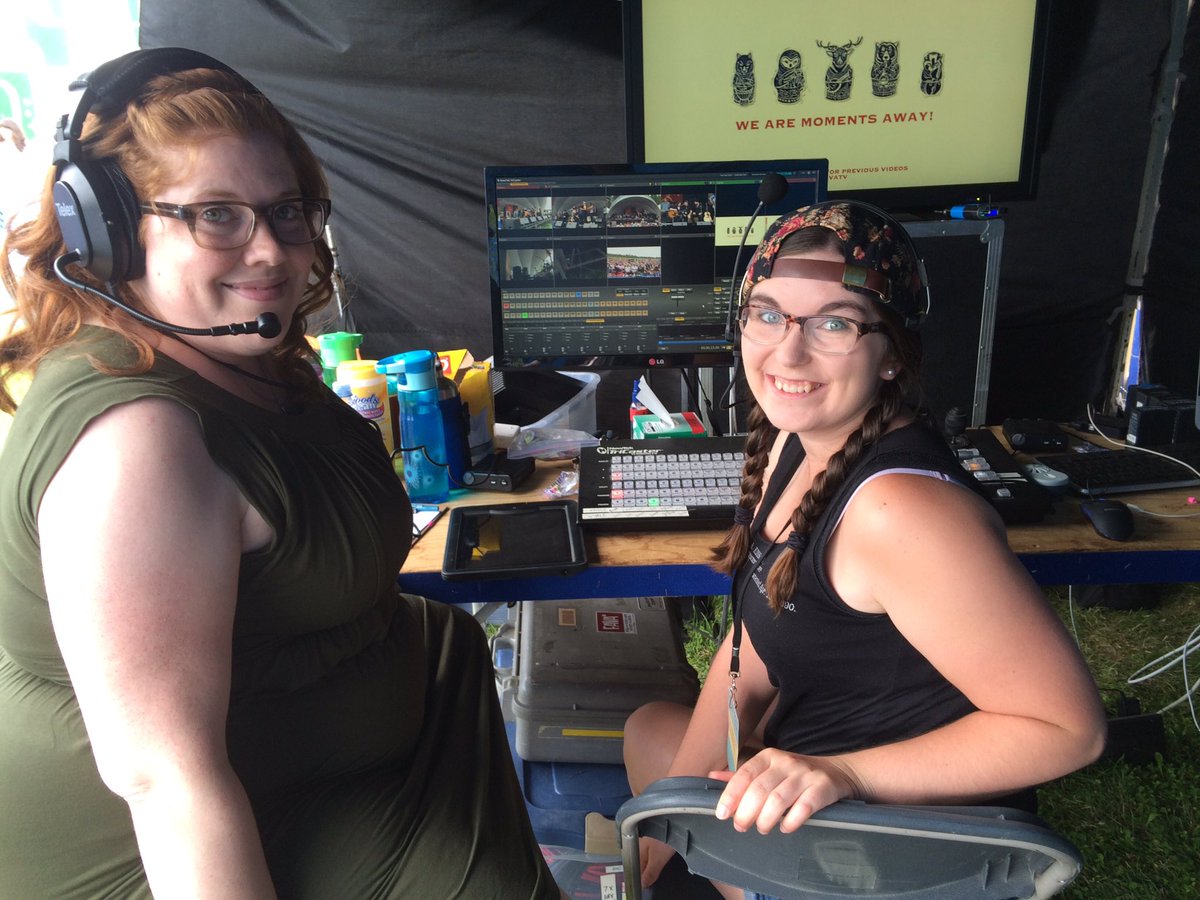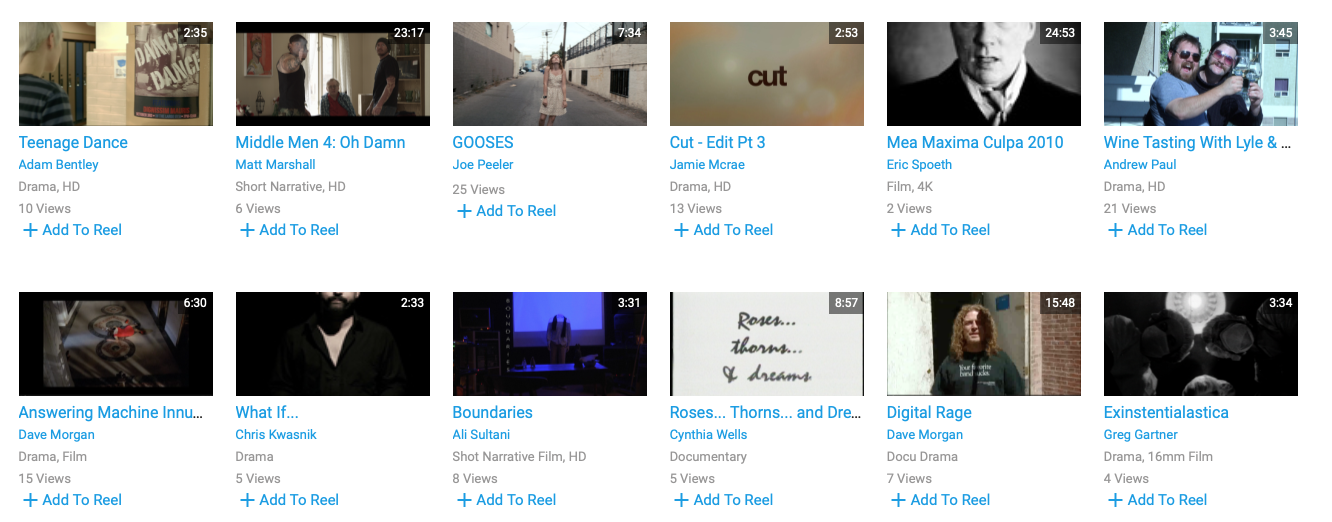In 2011, The Film and Video Arts Society of Alberta (FAVA)’s Production Manager Andrew Scholotiuk first approached Executive Director Dave Cunningham with an idea for an online portal for FAVA members’ films. It was met with skepticism, to say the least.
“We used to laugh at him. We called it Space Station Andy, it sounded so outrageous! He had a lot of good ideas, but the scope of it was so big. It didn’t seem possible,” says Cunningham.
Cunningham, like so many artists and heads of media arts organizations, has always grappled with one of the biggest challenges for an independent filmmaker: How do we get our work out there? After a film has run in festivals and more traditional venues, the internet was the obvious choice but the existing tools weren’t doing the job.
At the time, building a streaming online site for independent film and video from scratch was ambitious and costly. But Scholotiuk saw the bigger picture, and eventually found an opportunity in an unlikely place: spreadsheets.
Administrative work is a necessary but often neglected engine of any arts organization. Putting resources into the office is usually an afterthought, and the tools are usually cobbled together from what’s available, whether it’s donated office chairs, or making do with conventional software. Databases are the backbone of an arts organization, but they follow a boom-bust cycle. Organizations would channel resources to the latest version, only for it to become obsolete and requiring a rebuild every few years.
Scholotiuk thought there must be a better way: “We’re interfacing with the community in multiple ways, which means most organizations have a dozen or more spreadsheets of donors, volunteers, class registrations, equipment rentals, you name it. It’s a very complicated business model. The challenge is that we have all these systems that don’t talk to each other.”
Rather than follow the expert advice of do one thing well, FAVA took a different approach. What was missing, they thought, was integration: every organization is using a number of tools that each do one thing well, and that’s the problem.
In 2013, Scholotiuk and Cunningham found a young developer named Sam Pillar, who has since found success with the start-up, Jobber. Fresh out of school, FAVA hired him to create an arts management system from scratch.
“He’s become a wealthy fellow now, but at the time, he was a kid, and he built us a little app that managed our inventory and helped us make invoices and packing slips,” says Cunningham. He didn’t know it, but this little app was the first step towards FAVA TV as we know it today.
YouTube and Vimeo are useful platforms for independent media artists, but for the most part, short films get lost in the sheer volume of other content. It was also cumbersome for an organization the size of FAVA to administer an account themselves and curate the content. That type of work usually fell to staff, and Scholotiuk in particular. The first version of FAVA TV was built on WordPress, but he started to re-think what it would take to make the process easier.
Scholotiuk explains: “We found by doing that every video took time, and because it had to go through a person--me--to facilitate this, I became the de facto curator, which I didn’t like. The process should be more open than that. And we had limited control of video quality.” He also had concerns about ownership of content and flexibility of use. While existing platforms were able to show videos, they weren’t able to provide storage for still images or files for works in progress. That frustration was the mother of their next invention, and Cunningham was easier to convince this time. “Andy came to me and said, you know this little app we have for invoicing? With a little bit of work, we can add a button to that to play videos.” The success of that one button was all it took for Cunningham to finally understand how the system could be built out: “I suddenly realized, it’s all just one database, and it’s just different ways of looking at it.”
FAVA TV became the one database to rule them all. The database tracks each member’s rental history, their completed videos and documents, and provides storage space for works in progress. It can generate reports and invoices, and can coordinate communications and course registrations. Some members already have their entire oeuvre uploaded, and it’s also a way to back up their other files in the cloud. Over the course of development, it has grown steadily.
As Scholotiuk explains, “There’s been over 22 contributors to the code base. These are computer scientists, these are programmers, who wrote from scratch. We have teams from Edmonton and across the country and internationally who work on everything from code to testing to security. It’s really a software development company at its core, but it’s managed and owned by a non-profit.”
How did a nonprofit arts organization turn a little administration tool into a million-dollar app? It turns out, it’s been part of their business model all along: think like a co-op.
Cunningham, a founding member of FAVA, recalls why the organization came into existence in the first place. The gatekeeping of the old way of working was such that access to equipment and knowledge was restricted, which created a scarcity. These restrictions allowed only a few to work in the field, much less to make a living from it. This was a major problem for artists. “As a founding member of FAVA, we did the opposite, because we can make more art if we collaborated,” says Cunningham.
“The spirit of this is open source,” says Scholotiuk. “What we found in the early days, by just releasing the code, there were very few organizations that were able to really utilize it. They didn’t have the in-house technical staff to even spin up a server and get it going. What we heard from them is that they wanted us to host it. So it’s an open-source project which really ties into the bigger project, which is AMS, which is now a million-dollar project.”
"It’s our history. It’s the history of Alberta storytelling.”
Quickdraw Animation in Calgary was one of the first partners. “With Quickdraw, they saw our archive for video and they said that's good and we’ll use it, but we have 2,000 one-of-a-kind publications, so we want a module that would manage a library,” Cunningham recalls.
“The more people use it, they can piggyback on [previous] development by building according to needs. It becomes part of the big app and we give it to everybody.”
Initial funding of $20,000 came from the Alberta Foundation for the Arts and then through the Canada Council’s Digital Strategy Fund. Cunningham remembers, “When we read the grant application, we’ve never had a grant where we checked all the boxes that easily. And it was reaffirming that we were heading in the right direction, because at the time we weren’t getting a lot of great feedback.”
With that boost, they started building the app one partner at a time. Soon, other arts organizations, the Edmonton Folk Music Festival, Shumka dance, and other media arts co-ops, started to approach FAVA. A nice side-effect to the growth of the system is that it allowed each organization to amplify the work of others, which was particularly apparent in the partnership with the Folk Fest.1“It brought these international eyeballs, the fans of these bands, and it works like a fish hook. We would see massive spikes in activity throughout the site,” says Scholotiuk.
Aside from the FAVA-produced content, FAVA TV is all member-driven. Users can back up their work in the cloud, send private screening links to festivals, and show their work to the public on the FAVA TV site. It’s a way for the membership to contribute to the co-op’s catalogue and collection and the app builds its own archives.
FAVA TV is also finally allowing the completion of an archive of member works from over its 40-year history. “Creating a digitized collection and catalogue of member works has been a start-stop project for many years, “ says Dave Morgan, a long-time member and current FAVA archivist.
Over the years, volunteers or summer students would start working on cataloguing what they could find on the shelves of the FAVA collection. Staffing or funding would run out, and the catalogue would be abandoned until the next attempt and no one could keep up with the new works that kept being made. “What we have just expands and expands all the time. It was huge. There was no inventory. It was sorted by year, and it included every single format that had ever been invented,” says Morgan.
Digitizing the work was a solution, but it was such a huge undertaking, and sometimes the technology changes faster than the work being done. This meant someone would have to start over using more modern media. With FAVA TV, Scholotiuk made sure that the system would be able to adapt to this purpose, and that it wouldn’t fall to one person to accomplish it.
“As formats change, we have a more automated process rather than having to feed it tapes again. The other thing is by decentralizing it, we can approach it with teams. We can have a board member that can participate, or a summer student or whoever. This allows multiple people to collaborate all at once as their energy or their sprints, which are typically short lived, allows it to go somewhere, ” explains Scholotiuk.
As time goes by, Morgan and other FAVA members felt the urgency of preserving older media arts works. “What we had was a giant concern that all the tapes that we had of members’ work was deteriorating on the shelves,” he says. Despite everyone’s attempts over the years, they had no idea how many pieces they had in their collection. So far, they have digitized 3,000 works, with 1,300 pieces available online.
Morgan urges anyone with wayward tapes and older media art to contact him, since they may have the only copies surviving today: “My estimate is that the FAVA collection [now] is about half the work that got made through the co-op, because not everybody gave us a copy of their work. That would be a further step, trying to find the old work that we don’t have. It’s our history. It’s the history of Alberta storytelling.”
Cunningham has since stepped down as Executive Director and is now Director of Development, and Scholotiuk takes care of his creation full-time as Director of FAVA TV and the Arts Management System (AMS).2
In hindsight, Cunningham wishes he said yes to the project sooner. He’s proud of his team and of what they have all managed to accomplish: “In the world of managing art organizations I don't think there’s anybody in Canada, and possibly North America, who knows how to do it better. This app is actively being used by about 38 artist-run centres across Canada.” They expect that to double next year in all disciplines.
So far, donations and fees pay for staff and resources to maintain the system, and it’s hoped that at some point, it will become self-sufficient. AMS and FAVA TV have certainly grown, and Cunningham expects some change in its future to accommodate future expansion: “I admit that it’s a completely new experience and the majority has been positive, but there have been challenges too. The mandate is national, and FAVA is very local. So we’re getting to a point where we’ll have to get to the digital co-op will move this project out of FAVA and into a more suitable organizational structure. I believe there is a market for what this thing does, anywhere people need this kind of tracking and dissemination of digital objects.”
The way the system was developed has influenced its success. With FAVA staff using it every day and offering feedback and suggestions, it has allowed growth and improvements according to what is needed and what works. Scholotiuk says that authoring their own tools to reflect practical, everyday needs has already allowed staff to focus less on accommodating the inefficiencies of the tools they used to have, and more on enabling the creative work of the membership: “The accounting department or the membership coordinator would come to us and said, it's so much effort to send out renewal reminders. Could we automate it? So we created a plugin to be able to do that, and it saves her dozens of hours. When staff realize they can participate and add to the conversation of how we can do it better and not just “oh well, that’s just the way it goes,” there’s a whole mental shift. Now everyone is very proactive. It’s been a core contributor of FAVA’s growth and capacity.”
Space Station Andy doesn’t seem so unreasonable now. Scholotiuk says, “It started like this: we said we’re going to build FAVA TV and it's going to be a national media network. And they said, are you crazy? We don’t have time for that! We don’t have money! It was the longest way around this challenge. And the solution is a really complicated one, but by doing so has been a really rewarding process. We’ve learned a tonne along the way.”
To see all that FAVA TV has to offer, visit: https://www.favatv.com
From April until July, 2020, check out FAVA TV Fourfold: A Thematic Curatorial series by Kristen Hutchinson. The theme for the first installment is place: https://fava.ca/fava-tv-fourfold-a-thematic-curatorial/

